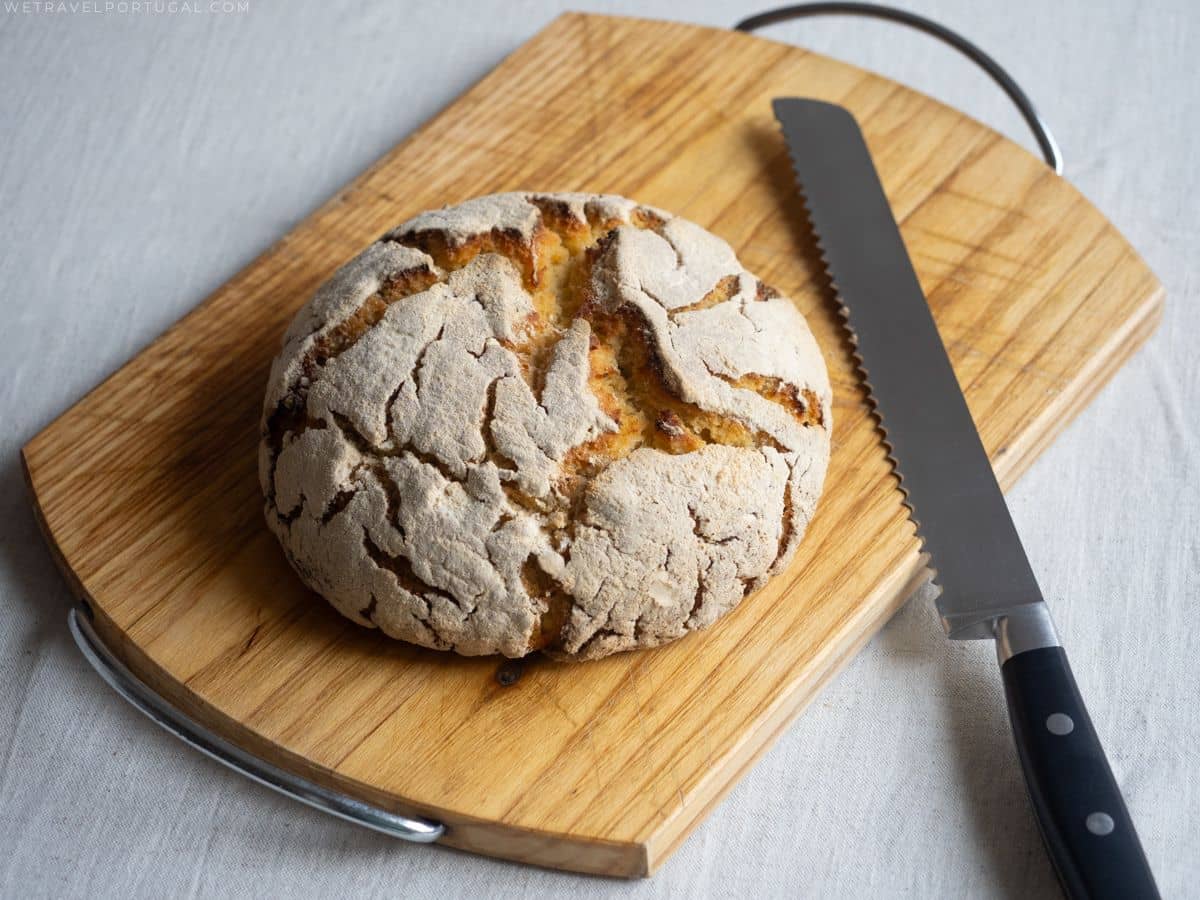Broa de milho is a dense bread that has a characteristic cracked top and a mildly sweet taste. It’s great on its own with a dollop of butter, but its crumbs are also used in several savoury recipes such as the classic Bacalhau com Broa.
If you’ve experienced a traditional Portuguese restaurant before, your meal probably started with bread, butter, olives, and a type of pâté. That’s what the Portuguese call couvert, an assortment of appetizers to nibble on while you decide what you want to order. Our favourite part of it is always the small basket of bread, usually made of two or three types of sliced homemade bread.
Typically, a crusty white bread, a seeded one, and a cornbread called broa de milho or just broa in the local language. It’s a unique bread that perhaps impossible to find outside of Portugal and some of its former colonies. The good news is that it’s super simple to recreate at home, and it will make you feel like a professional baker!

Our Broa de Milho Recipe
The key ingredient in this recipe is maize flour, preferably the yellow type, so your bread has the characteristic pale-yellow colour of the broa. In Portugal it’s called farinha de milho (corn flour) and there are different types that are classified based on how coarse they are. The best type for making broa is the 175, that comes in yellow or white. The type 70, which is the easiest to find in supermarkets and grocery stores, is also suitable, but absorbs more liquid so you might need to adjust the amount of water.
This classification is specific to Portugal, so we recommend using a medium coarse yellow maize flour. For some places, corn flour can mean the same as corn starch, but that’s not appropriate for this type of bread. The remaining ingredients are straightforward, strong bread flour, salt, water, sugar, and dry active yeast.
This bread is a no knead bread, that means you only have to combine the ingredients, and place it somewhere warm to rise. It’s the perfect bread to have alongside rich red meat dishes, but it also goes well with soups, such as the Portuguese Caldo Verde.

How to Make Portuguese Corn Bread

Have you tried this recipe? Let us know in the comments and don’t forget to leave a rating!


